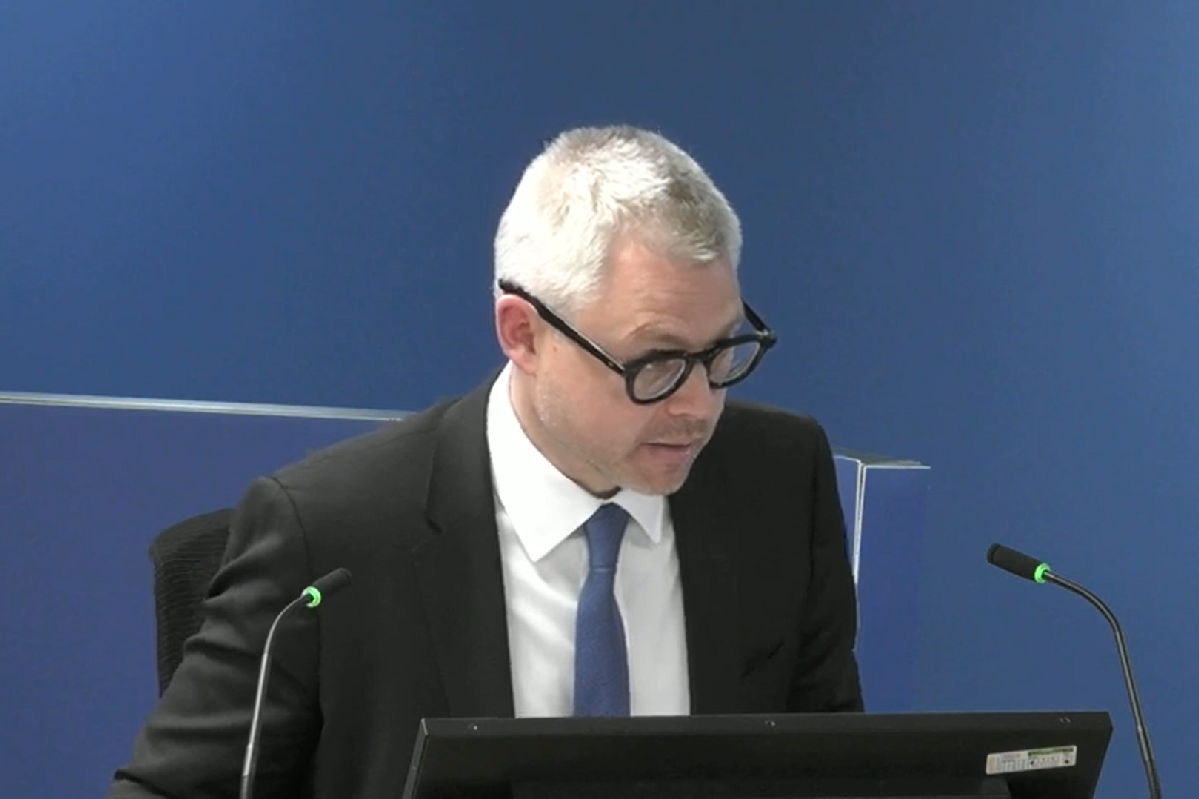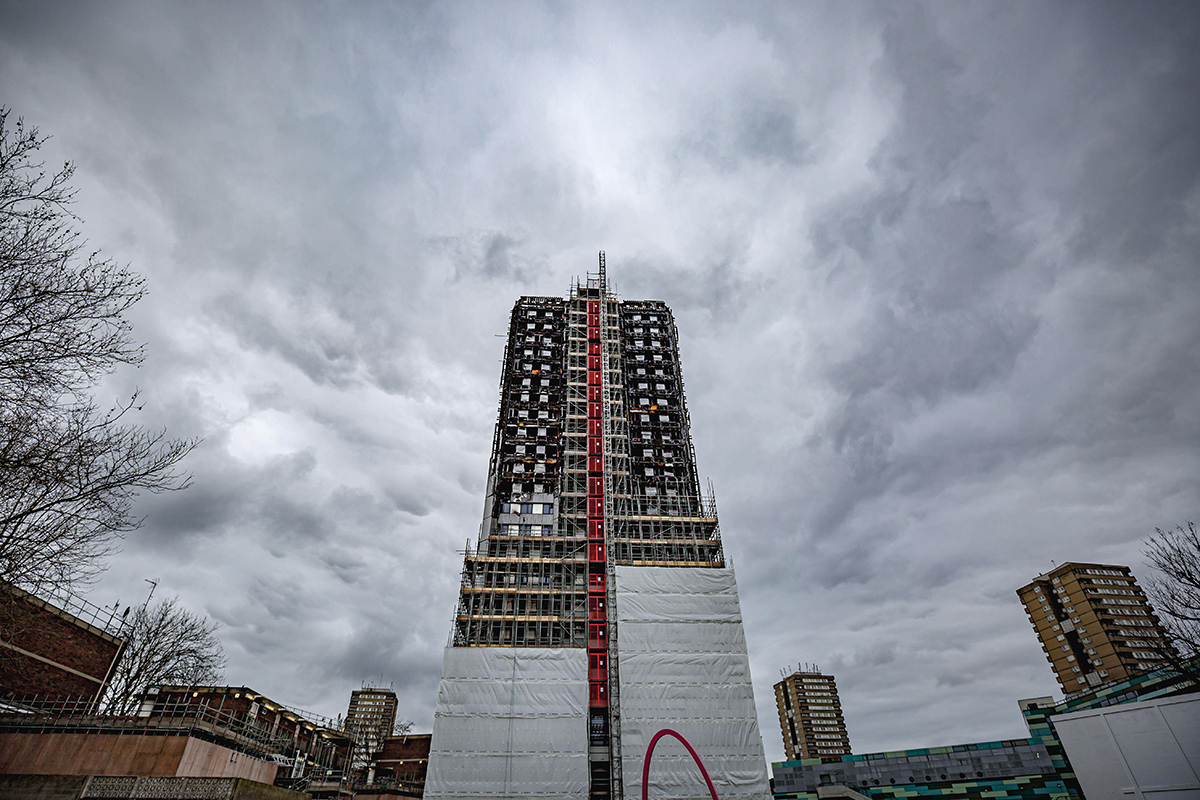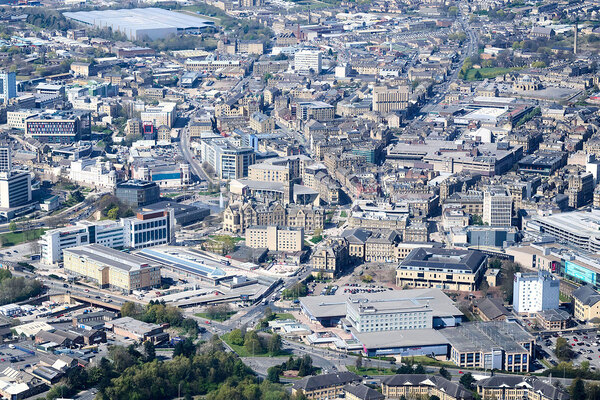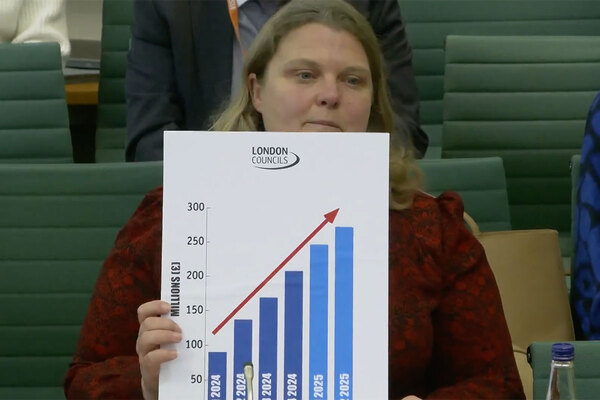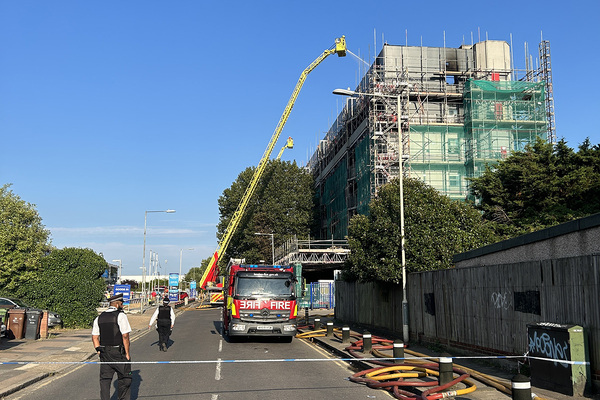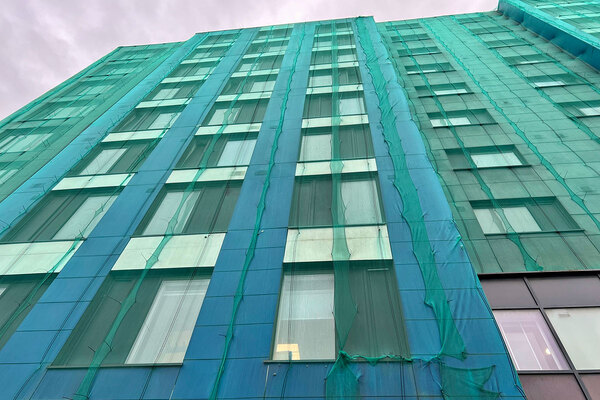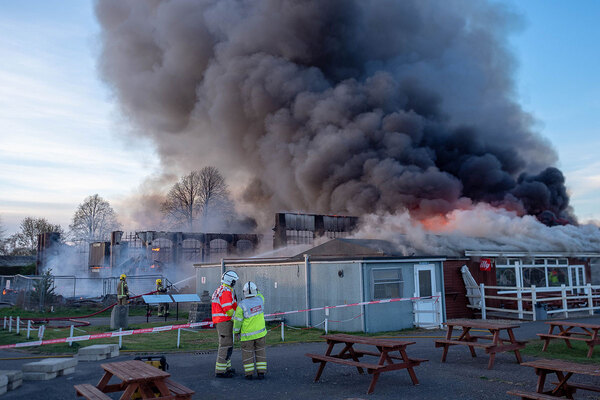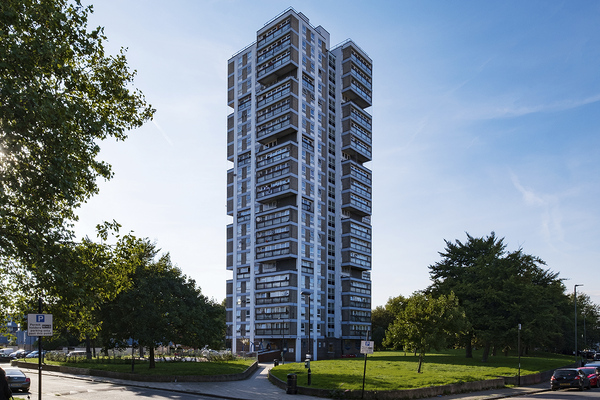Regulatory framework ‘encouraged’ builders to ‘exploit guidance in pursuit of profit’, expert tells Grenfell Inquiry
The government’s desire to increase the “freedom” of the construction industry led to a pre-Grenfell system of regulation which “perpetuated and encouraged” guidance being “misapplied and exploited in the service of generating profit whilst avoiding liability”.
This was the damning conclusion of Professor Luke Bisby, an expert witness who today presented a review of missed opportunities to tighten standards in the years before the Grenfell Tower fire.
He said there were “numerous opportunities” during which the guidance could have been “made simpler or less permissive” to mitigate the risk of a cladding fire, but “in each case there appears to have been powerful commercial and ideological incentives to increase complexity, whilst also increasing flexibility for industry”.
He also said the system in place since the early 1980s was “created specifically to enable people to circumvent the rules” and the decision not to tighten the rules following a deadly 2009 fire represented “a total failure of the system of building regulation”.
Professor Bisby emphasised the decision of Margaret Thatcher’s government to replace prescriptive building regulations with ‘performance-based standards’ backed by non-mandatory statutory guidance. For fire safety, this was contained in a guide called Approved Document B.
“In an effort to increase the ‘freedom’ of industry, the regulatory system became more permissive. No regulatory mechanism was put in place to ensure that those dispensing fire safety advice had the requisite competencies.
“You could argue that the system was created specifically to enable people to circumvent the rules,” he said in oral evidence.
He said that, in the next three decades, “an attempt to avoid disrupting the status quo or generate additional burdens on industry” meant outdated “legacy” standards were retained within the guidance when they should have been axed, creating multiple ways designs could be considered “compliant”.
“These multiple routes to compliance, when combined with widespread incompetence, inadequate oversight, and a perceived absence of liability, made misinterpretation, misapplication, and ‘gaming’ easier, more attractive and therefore more likely,” he wrote in his report.
While there were issues with the “ambiguity” of certain key sections in guidance, he added: “It was the structure and overarching philosophy of the wider regulatory framework that created and perpetuated – and indeed encouraged – the conditions in which the (ambiguous) guidance could be misinterpreted, misapplied, and/or exploited in the service of generating profit whilst avoiding (thus far) liability for inadequate design decision-making.”
In his oral evidence, he discussed the 1991 Knowsley Heights fire. This has long been interpreted as a blaze involving non-combustible materials, where fire-spread occurred due to missing cavity barriers.
However, the inquiry’s investigations have revealed that, in fact, the cladding was made of Cape Steni, a glass-reinforced plastic product, which, despite being combustible, met the Class 0 minimum standard in official guidance.
Professor Bisby said this revelation rendered him “speechless”. “The reason that I was speechless was because I was aware of Knowsley Heights, and have been for many years. The problem at Knowsley was [believed to be] the absence of cavity barriers. That’s what I believed. That’s what I was told… that’s the narrative of Knowsley.”
He said the fire – which occurred at a government-funded and -monitored scheme that was testing the efficacy of rainscreen cladding for high-rises – was a crucial missed warning on the road to Grenfell.
“If, after Knowsley someone had stood up and said, ‘Well, actually, a significant proportion of the adverse outcome at Knowsley was because we had a Class 0 combustible rainscreen’, then maybe we wouldn’t have had many other fires, including Grenfell Tower,” he said.
“I think it’s impossible to overstate the importance of what was missed here.”
He was unable to understand why the Building Research Establishment (BRE) had not raised the combustibility of the cladding panels in its report into the fire.
“In the photos after Knowsley, you see it, you see glass fibres hanging all over the place, you see partially burned rainscreen cladding panels – it’s abundantly clear what has happened.”
Inside Housing previously revealed the existence of a handwritten government memo which suggested the Knowsley fire was being “played down” in the official report.
“People who were within the organisation at that stage were the top fire scientists in the country,” Professor Bisby said. “If any of these people look at this evidence, I can’t see how they would not see what I saw.”
He said the memo “alludes to, certainly, the potential for some embarrassment, in my view, around the fire at Knowsley Heights”.
A fire in 1999 at Garnock Court resulted in a parliamentary select committee review of the adequacy of building regulations guidance, but despite multiple concerns being raised about the Class 0 standard, it was not scrapped. Instead, the government decided to introduce ‘large-scale testing’ as an alternative.
“There’s a strange sort of one-way set of blinders that people appear to have on in this period, where [people believed] when something went badly, what it was showing was the need for a full-scale test, as opposed to it showing that you shouldn’t use that product,” he said.
The BRE had been privatised in 1997 and would benefit commercially from the testing. Professor Bisby said the government had chosen “to simply add a new, and potentially lucrative to the recently privatised BRE, alternative route to compliance” rather than scrap the Class 0 standard.
Professor Bisby will continue giving evidence on Wednesday, following a day’s pause to mark the fifth anniversary of the Grenfell Tower fire. He is likely to be asked about other failures in the years leading up to the blaze.
He touched on several in his report, including the “catastrophic” failure of a cladding system containing the material used on Grenfell in a test run by the BRE and paid for by the government in 2001.
Professor Bisby’s report called this a “critical missed opportunity”, which he was “shocked” had not led to the abandonment of Class 0.
He also said that changes to building control, the bodies which sign building project systems off as compliant, to introduce competition from the private sector resulted in them viewing their role as “working with clients” rather than enforcing rules.
He said this was a “political choice”, the results of which were “entirely predictable”.
He also criticised the government for failing to act on the 2013 recommendations of the coroner who investigated the six deaths at Lakanal House, a 2009 tower-block fire in south London.
He said the period between this inquest and the Grenfell Tower fire in June 2017 was “characterised by increasing confusion, misinformation, concern, and – critically – inaction”.
He said the government had “opted to make no changes or clarifications to the guidance” as a result of Lakanal and this “can only be viewed as demonstrating a total failure of the system of building regulation”.
He branded a report prepared by the BRE for the government on the risk of external fire-spread after the inquest as “in places incomprehensible”, adding that it “appears to lack any real insights or practical significance”.
He said an emailed warning to civil servant Brian Martin regarding the use of aluminium composite material (ACM) cladding in the UK in January 2016 represented “an extraordinarily clear and precise articulation – some 17 months before the Grenfell Tower fire – of the systemic misunderstandings and misapplications of Approved Document B that I consider to be at the core of the Grenfell Tower Inquiry”.
Professor Bisby also expressed “great personal regret” that he did not take it upon himself to publicise concerns about the use of ACM more widely, after attending an industry summit in 2014 where the risks were discussed.
The inquiry continues with further evidence from Professor Bisby on Wednesday.
Sign up for our weekly Grenfell Inquiry newsletter
Each week we send out a newsletter rounding up the key news from the Grenfell Inquiry, along with the headlines from the week
Already have an account? Click here to manage your newsletters
